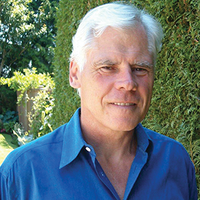Take a look at your business’s customer base and employees as they are two major selling points that will interest potential buyers.

By / Ron Coleman
Most businesses are not ready to be sold. As a result, many sales occur below their potential value. According to a poll conducted by KPMG in 2020, 38% of Canadian business owners surveyed wish they could retire, transition, or sell their business, but they are not prepared. Now, with the effects from covid-19 lingering, I am sure that number has increased. Statistics on the number of listed businesses that do sell range from a high of 40% down to 20%. Businesses with annual sales under $1 million are the hardest to sell. The majority of these sell to employees who often have little money to invest or are wound down. You will usually get the best dollar, with the lowest risk, by selling to a third party.
The two key questions that business owners should ask themselves are: How do I become one of the “lucky” 20 to 40%, and how do I get the best price? It’s not “luck” that will get you the best result. It is ensuring that you have done everything possible to make your business attractive. Focus on the following elements so that you are one of the “lucky” ones. If buyers don’t see great value in acquiring your business, then they will pass.
Consistent Profitability
Getting a professional valuation of your business is realtively straightforward. There are many profesisonals who can do that for you. The valuation doesn’t necessarily reflect the sale price. In my experience reviewing plumbing and HVAC businesses, I find the sellers are looking for five to seven times earnings before interest, tax, depreciation, and amortization (EBITDA), but the buyers only want to pay three to four times EBITDA. This is usually the sticking point.
Consistent profitability is a major plus. EBITDA of at least 10% of sales is very important. Check to see if your segment of the industry is in a period of growth, stagnation, or slowdown mode. How do your benchmarks compare to your competitors’?
I completed 23 annual financial surveys of HVAC contractors for Heating, Refrigeration and Air Conditioning Institute of Canada (HRAI). Consistenly, I found that 25% of businesses make between 10% and 22% pre-tax profit, 25% make between 5% and 10%, 25% make zero to 5%, and 25% lose money.
Many buyers are looking for up to five-year vendor takeback for 25% of the purchase price. That means the seller carries a portion of the sale price for a period of time, so if the sale price is $1 million, the VTB might be 25% or $250,000. Buyers that are heavily financed need this. Therefore, think about what kind of financing you are prepared to offer and what security and interest rate you expect.
Oftentimes, HVAC and plumbing contractors in small towns tell me that they can’t put their prices up because everyone knows what everyone else charges. In urban areas, they tell me the reason they can’t put their prices up is too much competition. Base your charge-out rates on value, not price.
Like-Buys-Like
Many potential buyers are attracted to synergies. This could be reducing overhead costs, greater eficiency in work, or cross selling. For example, a plumbing contractor buying an HVAC business, or vice versa, often makes a great deal of sense. Many customers, especially those run by property managers, like to have one supplier providing as many services as possible.
Unless you are in a rural area, sticking within eight kilometres of your customer base should be sufficient for you to get more business than you can possibly handle. Wasting time in traffic is neither productive nor profitable. Higher density concentration with your customers is often a real plus, especially when cities like the Greater Toronto Area and Metro Vancouver are total gridlocks.
Also, keep in mind whether or not the work you do is attractive to the current market. In a previous article, I talked about the upcoming difficulty in getting technicians, and I pointed out that some trades are going to have greater difficulties in recruitment than others. Do tradespeople want to work in your part of the industry? Is your busimess recession-proof? Even with COVID, customers need service and retrofits. Take an additional look at your business and determine if it is desireable. Are there synergies with other businesses? Is it established and low risk?
Intertwined Assets
Some companies can be run easily by a professional management team; however, these are usually larger businesses. These tend to be the easiest to sell. Smaller to mid-size contracting businesses tend to need an owner with excellent technical knowledge. Automation has become a major factor in developing efficiencies and reducing costs. Established systems that help the buisiness run smoothly and effectively are essential. Have you maximized automation?
Companies that have good employees with a low turnover rate have a greater chance of being sold. Your two main assets are your customer base and your employees—they are intertwined. Also, watch for long-term employees that could require severance as that will lower your value.
Fire Yourself
Lastly, I want to reiterate this as I have in the past—Fire Yourself! Make sure the business can run without your ongoing precence. The more the business relies on your everyday presence, the lower the value. More and more, I am seeing potential buyers wanting the owner/manager to stay in place. In smaller to mid-size contractors, they are a key portion of the goodwill. Most owner/managers want out within a reasonable time of selling the business. This can be a tough balance to negotiate.
The above are simple strategies, but they are not easy to implement. You need to create a mindset for both yourself and your employees to tailor these strategies to your business and to implement them one at a time. Don’t overwhelm yourself or your team.
If you would like to email me some questions, I will review them and publish them in a future article without identifying the source of the question. You may be surprised to find out how many of your peers have the same questions. Have a safe and successful 2022. ■
Ron Coleman is a Vancouver-based management consultant, author, and educator specializing in the construction industry. He can be reached by email at ronald@ronaldcoleman.ca



